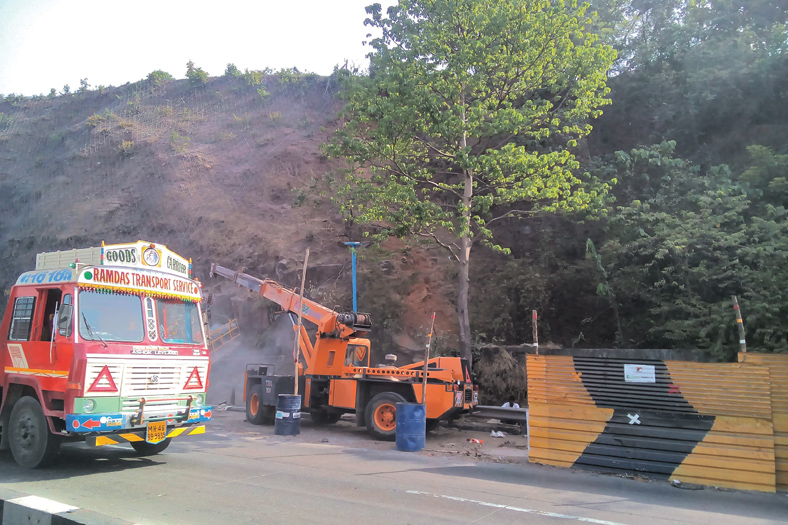Steel industry emerging with allied sectors
A look at the development, trends and challenges of steel industry
With top companies dominating the steel industry, it is one of the largest industries in India. Currently India is the fifth largest producer of crude steel in the world and is expected to become the second largest producer by 2015.
The Indian steel industry entered into a new development stage from 2007-08 and since then it has been riding high on the rising demand for steel. The growth of steel industry is linked to many sectors, especially infrastructure. Here we present a special report on current performance, trends, challenges and future outlook for the steel industry. Current performanceThe Indian steel industry is highly consolidated with companies achieving targets and also going beyond them. The industry is expanding its production capacity and is expected to emerge at a larger level. With trade barriers being reduced imports on steel will play a major role. Currently India is a net importer of steel in the global market.
Commenting on the performance of Jindal Steel and Power Ltd., Ravi Uppal, Managing Director and Group CEO of the company said, “Our market capitalisation today is over ` 27,000 crore, all because of capacity addition, industry-leading innovations, enhanced operational efficiencies, greater cost optimisation and our foray into emerging markets.”
Being a core sector, steel industry tracks the overall economic growth of the country. Steel’s fortune is also dependent on the growth of other sectors like automobiles, consumer durables and particularly infrastructure.Radhika Markan, Managing Director, H&K Rolling Mill Engineers Pvt. Ltd. comments, “In the last financial year, we not only met our targets, but also exceeded them. Of course we had to work much harder given the slow growth rate of India’s economy. But we are confident of the future, given the new government’s single minded focus on reviving the Indian economy through infrastructure growth.”
Upcoming trendsWith the focus on infrastructural projects steel industry will have a major role to play in the upcoming projects. Also with the government investing heavily on various infrastructure projects, the demand for steel is expected to rise as commencement of these projects gets underway.
Mr Uppal says, “Continuing with the growth momentum of our primary businesses, we are finding strong adjacencies in construction material business. We have also invested in un-conventional technologies like pre-cast slabs, light gauge structural, schnell panels for faster and cheaper construction of homes.”
Commenting on the trends Ms Markan says, “India will need to invest $ 1.7 trillion on infrastructure projects before 2020 to meet its economic needs. Half of this investment is expected to come from the private sector.” She feels that the government has made a good start by setting aside ` 37,800 crores for national highways and state roads, and bringing back into focus the Public-Private-Partnership (PPP) model.
In addition to roads and highways, the government also has on its mind port infrastructure, cross-country power grid, interlinking of rivers and dams, new railway lines, new airports, 100 smart cities, cold-storage facilities for food items etc. “Given the single-minded focus on infrastructure, I expect in the foreseeable future the easing of credit lines, fast-tracking of clearances, and an enabling environment to ensure efficient implementation,” Ms Markan says.
ChallengesThe major challenges which the Indian steel industry faces are high capital costs, technological issues and government policies. Also shortage of land acts as hindrance as companies are not able to expand their productional capacity due to non availability of land. Shortage of skilled labour is always been a talk of concern for the steel sector.
Mr Uppal explains, “Last couple of years, the growth rate of the steel sector has been modest while the world steel production increased by about 1 per cent, Indian steel production grew by over 5 per cent. Even though domestic demand was not very strong, but the gap was filled by export. In recent years, there have been challenges for the growth of the steel industry like raw material security, land availability, shortage of skilled workforce and other policy delays. But now, we are very optimistic about the impending boom with overall industrial growth leading to sustained demand of steel.”
While Ms Markan states, “Land acquisition continues to be a big obstacle. I doubt the government can achieve its targets on infrastructure without addressing this concern. Funding remains another bottleneck that needs government attention.”
Future outlookThe government plans to boost the economic growth, by issuing funds in industries such as construction, infrastructure, automobile, and power which are major players for the growth in the steel sector. This is expected to provide an impetus for growth for the steel industry in future.
The government is banking on reviving the economy through strong infrastructure growth. Steel is a critical component and directly reflects on the state of infrastructure in the country.
Ms Markan opines, “The policies of the past 10 years has led to little or slow growth in steel consumption which presently stands at 75 million tonnes whereas it should have been around 200-220 million tonnes by now. This meagre per capita steel consumption of 60-65kg is that found in a ‘developing’ country (50-150 kg). To become a ‘developed’ nation and a global power, the steel consumption has to be at least 350 million tonnes or the 250-300 kg per capita consumption.”
Today JSPL has a global steel capacity of 7 MTPA. In Q1, the company has also completed upgradation of our Raigarh steel making facility. “By 2020, we plan to enhance steel production to 16 MTPA, backed by domestic and international source of material,” Mr Uppal informs.
————————–By 2020, we plan to enhance steel production to 16 MTPA, backed by domestic and international source of material
Ravi Uppal, MD and Group CEO ,Jindal Steel and Power Ltd.————————
————————To become a ‘developed’ nation and a global power, the steel consumption has to be at least 350 million tonnes or the 250-300 kg per capita consumption
Radhika Markan, Managing Director, H&K Rolling Mill Engineers Pvt. Ltd.
Cookie Consent
We use cookies to personalize your experience. By continuing to visit this website you agree to our Terms & Conditions, Privacy Policy and Cookie Policy.









